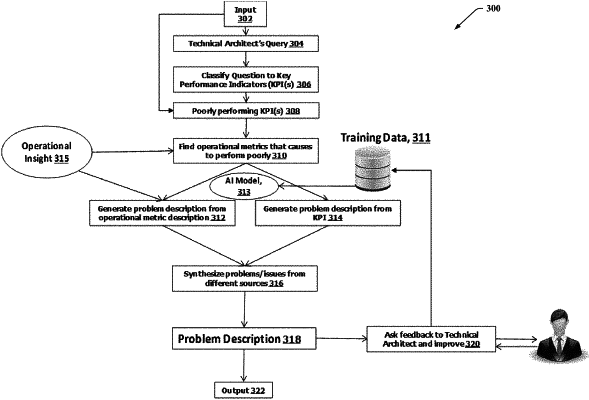| CPC G06F 16/2465 (2019.01) [G06N 3/042 (2023.01); G06N 3/044 (2023.01); G06N 3/08 (2013.01); G06Q 30/016 (2013.01)] | 22 Claims |

|
1. A system, comprising:
a memory that stores computer-executable components;
a processor, operably coupled to the memory, and that executes the compute r-executable components stored in the memory, wherein the computer-executable components comprise:
a query component that generates key performance indicators and maturity scores from a query, wherein a maturity score is an indicator of a position in time that a problem related to a key performance indicator occurs such that a low maturity score is indicative of the problem occurring prior to and having increased urgency than a second problem in time, and wherein the query component determines a subset of key performance indicators that individually have a performance below a threshold and maps the subset of key performance indicators to operational metrics;
a learning component that generates, using artificial intelligence, problem descriptions from one or more of the subset of key performance indicators or the operational metrics by computing a correlation between the subset of key performance indicators and the operational metrics and transmits the problem descriptions to a first database, wherein the problem descriptions comprise identification of risks based on prediction of outages or failures in at least an electronic device; and
a content component that retrieves the problem descriptions from the first database, searches a second database for a recommendation based on the problem descriptions, and provides the recommendation for an entity;
wherein the query component further generates a context description from the key performance indicators and the learning component uses the context description to train the artificial intelligence.
|